This eatery is popular with Hachijojima Island residents and repeat visitors alike, and is a great place to enjoy a hearty meal of soba (buckwheat noodles), which is not commonly served on Hachijo Island. The soba is handmade by the chef who learned the craft from a soba master at a long-established restaurant in Ueno.
On my visit to Senryo Soba, I had a generous helping of kitsune udon. For the uninitiated, kitsune udon is a warming bowl of thick and chewy wheat noodles in dashi broth topped with fried tofu, greens, and fish cake. The dish gets its name from kitsune, the fox. Some sources say that this is a favorite food of foxes, and others say that the auburn color of the deep-fried tofu that recalls the fox’s coat is the reason people call it kitsune udon. Whatever the origin, this dish made with locally caught fish is a delicious and filling soup, perfect for a lunch break while roaming the island.
On the side, I had ashitaba tempura. I had to try this leafy green vegetable, related to carrots, parsley, and celery, endemic to the Izu Island chain. It’s served in many permutations, including pasta, soba and even ice cream. It gets its name ashitaba,“tomorrow’s leaf” from its prodigious growth – cut the greens, and within a day, it grows again. The side of ashitaba tempura was perfectly done, and lended a peppery and crunchy accompaniment to kitsune soba.
Senryo also serves popular dishes such as hand-made buckwheat noodles with shrimp tempura and nabe udon in the winter. When you visit in summer, try the shaved ice treats.
The restaurant preserves the atmosphere of days gone by a display of art and cultural artifacts. Look around and you will notice a taiko drum that is used in the unique Kashitate dance, drum and song tradition, and paintings by a local artist that depict the distinctive stone walls of Kashitate village, the proprietor as a young girl, and farmers at their work.
Make a day of your visit to Kashitate with a visit to Meyu Kihachijo textile workshop, performance of the unique drum and song tradition at nearby Hattori Yashiki, and soak in one of the island's onsens.
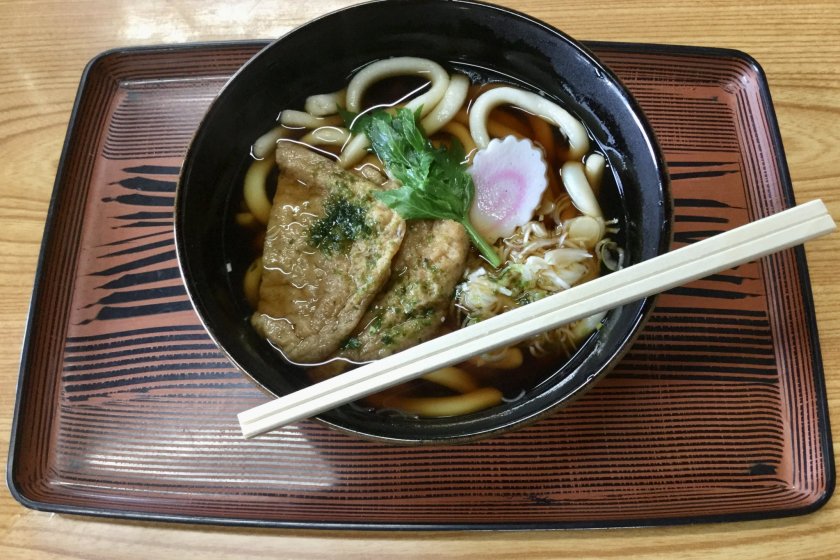
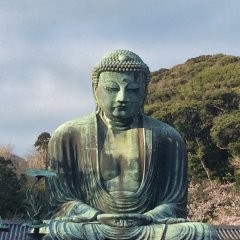

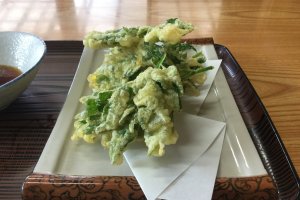

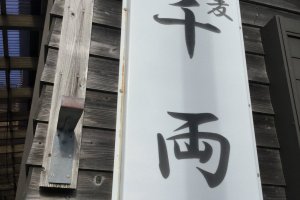
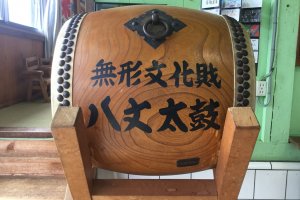





























The drum is used in Kashitate Odori, the drum and song performance at nearby Hattori Yashiki heritage building.
I saw it once years ago - it's from another century. Good on them for preserving it.
She told me there are more lovely paintings in other homes on the island.